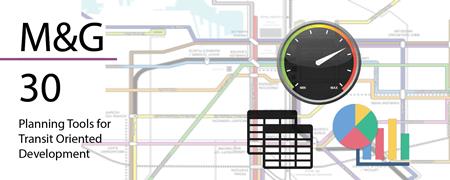Federal TOD Policies
The Federal Transit Administration (FTA) and other federal agencies provide transportation, economic development, and housing programs that support TOD.
FTA Joint Development
The FTA’s Joint Development Guidance offers grantees -- state, regional, or local transit agencies -- flexibility to work with developers and others on TOD. FTA might allow use of FTA property and programs to support TOD or improve public transit facilities.
 1997 - FTA issues a Transit Joint Development policy that allows property acquired with federal funds to be used for TOD. A transit agency need not return the proceeds of selling land purchased with federal grants to FTA as long as funds go toward a TOD joint development project. The policy also allows a transit agency to sell a real property not to the highest bid offered, but to a TOD that could increase transit usage.
1997 - FTA issues a Transit Joint Development policy that allows property acquired with federal funds to be used for TOD. A transit agency need not return the proceeds of selling land purchased with federal grants to FTA as long as funds go toward a TOD joint development project. The policy also allows a transit agency to sell a real property not to the highest bid offered, but to a TOD that could increase transit usage.
 2005 - The Safe, Accountable, Flexible, and Efficient Transportation Equity Act: A Legacy for Users (SAFETEA-LU). Allows FTA to amend the definition of a capital project to include commercial and residential development as related to public transportation projects. New criteria for a joint development project seeking federal transit funds.
2005 - The Safe, Accountable, Flexible, and Efficient Transportation Equity Act: A Legacy for Users (SAFETEA-LU). Allows FTA to amend the definition of a capital project to include commercial and residential development as related to public transportation projects. New criteria for a joint development project seeking federal transit funds.
 2013 - FTA releases draft proposal to update policy on joint development to clarify joint development provisions and include the provisions of Moving Ahead for Progress in the 21st Century (MAP-21).
2013 - FTA releases draft proposal to update policy on joint development to clarify joint development provisions and include the provisions of Moving Ahead for Progress in the 21st Century (MAP-21).
New Starts and Small Starts Criteria
The FTA’s New Starts and Small Starts programs provide funds for the construction of new fixed-guideway systems or the extension of existing systems through a competitive evaluation process. FTA rates a project based on local financial commitment and project justification and assesses criteria including the Transit Supportive Land Use and Economic Development Effects for which a comprehensive set of planning and implementation factors are explicitly rated in each of the preliminary engineering and final design stages. Projects that have received FTA funding have implemented transit-supportive land use policies, plans, zoning and other tools.
Through the requirement of transit-supportive land uses and economic development policies for transit projects, the New/Small Starts programs become catalysts for encouraging TOD planning and implementation across the nation. Maryland’s proposed Baltimore Red Line and the Corridor Cities Transitway in Montgomery County both used New Starts Program funding, which became the catalyst for adoption of TOD policies, zoning, and plans for proposed transit station areas.
